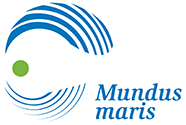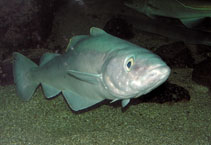http://www.fishbase.org/Summary/speciesSummary.php?genusname=Pollachius&speciesname=pollachius ---> http://192.134.151.83/Summary/speciesSummary.php?genusname=Pollachius&speciesname=pollachius
http://192.134.151.83/Summary/speciesSummary.php?genusname=Pollachius&speciesname=pollachius ---> https://fishbase.mnhn.fr/Summary/speciesSummary.php?genusname=Pollachius&speciesname=pollachius
https://fishbase.mnhn.fr/Summary/speciesSummary.php?genusname=Pollachius&speciesname=pollachius ---> https://fishbase.mnhn.fr/summary/Pollachius-pollachius.html
Pollachius pollachius, Pollack : fisheries, gamefish
This page is sponsored by
Mundus Maris

Common name (e.g. trout)
Genus + Species (e.g. Gadus morhua)
-

-
About this page
-
Languages
-
User feedbacks
-
Citation
-
Uploads
-
Related species
-


 Pollack
Add your observation in
Fish Watcher
Upload your
photos
and
videos
Pollack
Add your observation in
Fish Watcher
Upload your
photos
and
videos
Pictures
|
Videos |
Google image
 Pollachius pollachius
Pollachius pollachius
Picture by
Ueberschär, B.
Teleostei (teleosts) >
Gadiformes
(Cods) >
Gadidae
(Cods and haddocks)
Etymology:
Pollachius:
Scottish dialect, podlock, paddle = bumpfish (Ref.
45335
)
.
More on author:
Linnaeus
.
Environment: milieu / climate zone / depth range / distribution range
Ecology
Marine; benthopelagic; oceanodromous (Ref.
51243
); depth range 40 - 200 m (Ref.
6302
), usually 40 - 100 m (Ref.
54707
). Temperate; 72°N - 36°N, 25°W - 28°E
Northeast Atlantic: Iceland, the Faeroes and Norway to the Bay of Biscay (Ref.
1371
); also southern Baltic Sea (Ref.
89342
) with records from Poland, Latvia and Estonia (Refs. 36252, 52079).
Length at first maturity / Size / Weight / Age
Maturity: L
m
41.0
, range 42 - ? cm
Max length : 130 cm TL male/unsexed; (Ref.
1371
); common length : 75.0 cm TL male/unsexed; (Ref.
1371
); max. published weight: 18.1 kg (Ref.
40637
); max. reported age: 8 years (Ref.
1371
)
Dorsal
spines
(total): 0;
Dorsal
soft rays
(total): 29-33;
Anal
soft rays
: 27 - 30;
Vertebrae
: 52 - 55. Lower jaw distinctly projecting beyond upper ones. Lacks a chin barbel. Dark lateral line that sharply curves over the pectoral fin and continues over whole body. No dark spot at pectoral fin base. Dorsal and anal fin interspaces short. Sensory canals with large pores on head. Body color is variable; dark dorsally, sharply distinguished from silver-gray sides and belly; the upper part of the body with yellow to orange streaks or blotches; the lateral line greenish. The fins uniformly dark except for the pelvic fins which are yellowish.
Found in inshore waters but also down to 200 m depth, in areas with hard bottoms. Juveniles are pelagic, spending 2-3 years near the coast including rocky areas, kelp beds, sandy shores and estuaries (Ref.
1371
,
58137
,
89343
,
89362
). Juveniles may form schools with saithe (
Pollachius virens
) (Ref.
88187
), and have also been found solitary and defending their feeding territory (Refs. 42174, 89363). Larger individuals move to the open sea and are often found around rocky areas at 40-100 m depth (Ref.
1371
). Also observed around shipwrecks and oil platforms (Ref.
88187
). Adults occur singly or in small dispersed shoals but is known to form dense shoals on spawning grounds (Ref.
89364
). Suggested to undertake spawning migrations (Ref.
88171
). Caught as bycatch in cod and saithe fisheries. Flesh is dry but of good flavor (Ref.
35388
). Classified as a "hearing generalist" (89365); has also been found to produce sound. Juveniles have been reported to make repeated short grunts during competitive feeding and aggressive encounters (89366).
Oviparous and gonochorous (Ref.
205
).
Cohen, D.M., T. Inada, T. Iwamoto and N. Scialabba
, 1990. FAO species catalogue. Vol. 10. Gadiform fishes of the world (Order Gadiformes). An annotated and illustrated catalogue of cods, hakes, grenadiers and other gadiform fishes known to date. FAO Fish. Synop. 125(10). Rome: FAO. 442 p. (Ref.
1371
)
IUCN Red List Status (Ref.
130435
)
Least Concern (LC)
; Date assessed:
16 October 2013
CITES
Not Evaluated
Not Evaluated
Threat to humans
Harmless
Human uses
Fisheries: commercial; gamefish: yes
FAO - Aquaculture:
production
; Fisheries:
landings
,
species profile
; Publication:
search
|
FishSource
|
Sea Around Us
More information
Countries
FAO areas
Ecosystems
Occurrences
Introductions
Stocks
Ecology
Diet
Food items
Food consumption
Ration
Common names
Synonyms
Metabolism
Predators
Ecotoxicology
Reproduction
Maturity
Spawning
Spawning aggregation
Fecundity
Eggs
Egg development
Age/Size
Growth
Length-weight
Length-length
Length-frequencies
Morphometrics
Morphology
Larvae
Larval dynamics
Recruitment
Abundance
BRUVS
References
Aquaculture
Aquaculture profile
Strains
Genetics
Electrophoreses
Heritability
Diseases
Processing
Nutrients
Mass conversion
Collaborators
Pictures
Stamps, Coins Misc.
Sounds
Ciguatera
Speed
Swim. type
Gill area
Otoliths
Brains
Vision
Tools
Bio-Quiz
|
E-book
|
Field guide
|
Identification keys
|
Length-frequency wizard
|
Life-history tool
|
Point map
|
Classification Tree
|
Catch-MSY
|
Special reports
Check for Aquarium maintenance
|
Check for Species Fact Sheets
|
Check for Aquaculture Fact Sheets
Download XML
Summary page
|
Point data
|
Common names
|
Photos
Internet sources
AFORO (otoliths)
|
Aquatic Commons
|
BHL
|
Cloffa
|
BOLDSystems
|
Websites from users
|
Check FishWatcher
|
CISTI
|
Catalog of Fishes
:
genus
,
species
|
DiscoverLife
|
DORIS
|
ECOTOX
| FAO - Aquaculture:
production
; Fisheries:
landings
,
species profile
; Publication:
search
|
Faunafri
|
Fishipedia
|
Fishtrace
| GenBank:
genome
,
nucleotide
|
GloBI
|
Google Books
|
Google Scholar
|
Google
|
IGFA World Record
|
MitoFish
|
National databases
|
Otolith Atlas of Taiwan Fishes
|
Public aquariums
|
PubMed
| Reef Life Survey | Socotra Atlas |
Tree of Life
| Wikipedia:
Go
,
Search
| World Records Freshwater Fishing |
Zoological Record
Estimates based on models
Preferred temperature (Ref.
123201
): 7 - 11.9, mean 8.9 °C (based on 283 cells).
Phylogenetic diversity index (Ref.
82804
): PD
50
= 0.7500 [Uniqueness, from 0.5 = low to 2.0 = high].
Bayesian length-weight: a=0.00708 (0.00603 - 0.00831), b=3.08 (3.04 - 3.12), in cm total length, based on LWR estimates for this species (Ref.
93245
).
Trophic level (Ref.
69278
): 4.3 ±0.3 se; based on diet studies.
Generation time: 5.9 ( na - na) years. Estimated as median ln(3)/K based on 1
growth studies.
Resilience (Ref.
120179
): Medium, minimum population doubling time 1.4 - 4.4 years (K=0.19; tmax=8).
Prior r = 0.63, 95% CL = 0.42 - 0.95, Based on 3 stock assessments.
Fishing Vulnerability (Ref.
59153
): High vulnerability (59 of 100).
Climate Vulnerability (Ref.
125649
): Very high vulnerability (82 of 100).
Price category (Ref.
80766
):
Low
.
Nutrients (Ref.
124155
): Calcium = 8.53 [3.62, 29.51] mg/100g; Iron = 0.222 [0.085, 0.575] mg/100g; Protein = 17.7 [15.7, 19.8] %; Omega3 = 0.544 [0.279, 1.082] g/100g; Selenium = 25.4 [8.6, 76.9] μg/100g; VitaminA = 17.8 [4.6, 71.0] μg/100g; Zinc = 0.401 [0.206, 0.797] mg/100g (wet weight);
Back to Search
Random Species
Back to Top
Accessed through:
Not available
FishBase mirror site :
localhost
Page last modified by :
mrius-barile
- 20 July 2016
Fatal error
: Uncaught ArgumentCountError: Too few arguments to function checkEcotox(), 1 passed in /var/www/html/summary/speciessummary.php on line 2304 and exactly 3 expected in /var/www/html/includes/speciessummary.lib.php:2579 Stack trace: #0 /var/www/html/summary/speciessummary.php(2304): checkEcotox() #1 {main} thrown in
/var/www/html/includes/speciessummary.lib.php
on line
2579
|